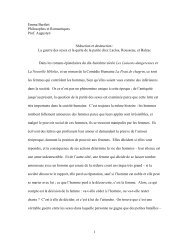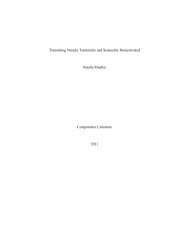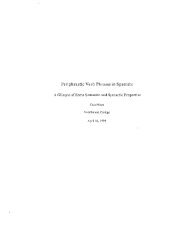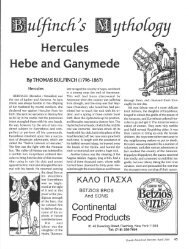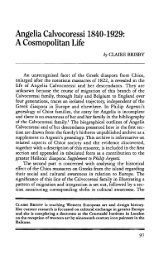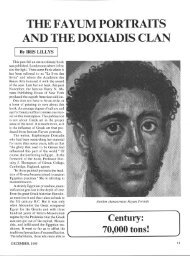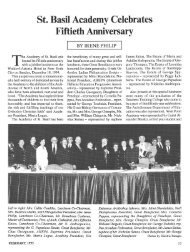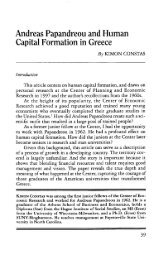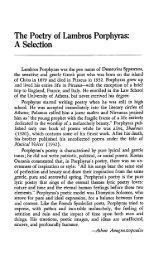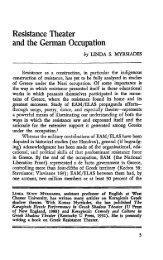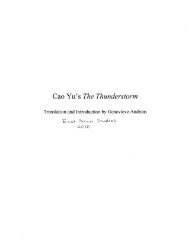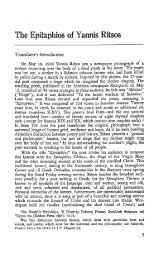Mythistorema - Triceratops Home
Mythistorema - Triceratops Home
Mythistorema - Triceratops Home
You also want an ePaper? Increase the reach of your titles
YUMPU automatically turns print PDFs into web optimized ePapers that Google loves.
58 JOURNAL OF THE IIELLENIC DIASPORA<br />
The image of the three doves is reminiscent of Garcia Lorca's four<br />
pigeons in his short poem "The Hunter":<br />
Above the pine trees<br />
four pigeons go through the air.<br />
Four pigeons<br />
fly and turn round.<br />
They carry wounded<br />
the four shadows.<br />
Below the pine trees<br />
four pigeons lie on the ground."<br />
As C.M. Bowra remarks, commenting on this poem, the four pigeons<br />
were "shot while in flight through the air."" The similarity with Seferis'<br />
three doves may extend also to the symbolism, since also in Lorca's work<br />
the doves killed by the hunters, or "murderers of doves," also stand for<br />
human victims. Thus, the red doves seem to symbolize here the "people<br />
whom [the protagonist) loved," and who died a violent death, as if<br />
shot in flight. So it seems highly improbable that the red color of the<br />
doves could symbolize here passion or sensuality.<br />
A very different image, but one in which the same central symbolism<br />
can be discerned, is found in Seferis' "Raven," in which this bird again<br />
contains the memories of many dead people from the protagonist's past:<br />
there's a whole crowd gathered in that bird<br />
thousands of people forgotten, wrinkles obliterated<br />
broken embraces and uncompleted laughter,<br />
arrested works, silent stations<br />
There are many wounds, inside those invisible people within it<br />
suspended passions . . .<br />
children slaughtered and women exhausted at daybreak.<br />
Although this is a much more elaborate treatment, the theme is the<br />
same: the raven here is not very different from the doves in poem "14,"<br />
in the sense that they both symbolize dead persons whose death has left<br />
an indelible mark on the narrator's consciousness—a mark which, in a<br />
way, has played a central role in determining his fate.<br />
'°Frederko Garcia Lorca, Selected Poems, tr. J.L. Gili and Stephen Spender<br />
(London: Hogarth Press, 1943) 12.<br />
"Bowra, 194.



